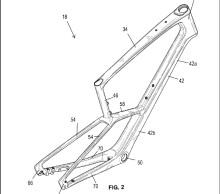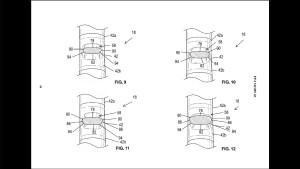Double diamond frames could be the next trend
The presentation of the spectacular new version of the Rondo Ruut, the Polish brand's latest gravel bike, and the publication several weeks ago of a Specialized patent with a design similar to this bike perhaps foreshadow what could be a new trend in the design of gravel and rigid mountain bikes thanks to the great absorption capacity provided by this new configuration.

Four better than three
For more than a century, bicycles have enjoyed a similar and well-proven design based on a double triangle structure. A main one at the front designed to support the whole structure and a smaller rear one, which houses the rear wheel and the drivetrain that transmits the force applied to the pedals to the rear wheel.
A configuration that, broadly speaking, is maintained today in the world of road bikes, where UCI technical regulations require these configurations to be maintained in hardtail mountain bike models and in gravel and cyclocross bikes. Only the full suspension models have moved away, for obvious needs, from this classic design to make room for their swingarms.
RECOMENDADO

When do helmets have to be changed? Do they have an expiration date?

The best apps for cycling and mountain biking

Black Friday 2025 cycling bargains: save on Garmin, POC, Maxxis and more

Black Friday Garmin 2025: the ultimate guide to choosing your GPS at the best price

Which profile wheels to choose according to the area where you live: mountain, flat or coast

How to wash your cycling clothes? 10 keys to make them always look new

However, a news item that appeared a few days ago on the American portal BikeRumor unveiled a frame patent published at the end of January with a radical design based on a double diamond structure threatens to change this paradigm.
According to the brand's studies, this design, in which the seat tube is interrupted and suspended over the bottom bracket, would have a higher vertical deflection capacity, meaning greater absorption, making it a fantastic option for bikes designed to be ridden on uneven surfaces such as gravel or mountain bike models that are not as constrained by UCI regulations as their road counterparts.

All this without affecting the lateral stiffness of the set as revealed by the simulations of Morgan Hill, which also include in its patent sections of this hypothetical frame in which it is observed that the width is greater than the height seeking to maximize both absorption and stiffness.
When it seemed that it would be just one of the many ideas that brands protect for a possible future use and that are often shelved, the surprise came with the announcement by the Polish brand Rondo of its renewed Ruut gravel bike that, coincidentally, uses a design similar to the one created by Specialized.
According to sources from the brand itself, there seems to be no conflict with the Californians' patent, as its design has some subtle differences, despite the fact that at first glance, it is the same concept. A bike they have been developing since 2020 and will be on sale at the end of this season. By the way, speaking of similarities, surely someone will also find similarities between the current Ruut and the Inflite, Canyon's cyclocross machine ridden by Mathieu Van der Poel.
Besides the advantages in terms of absorption that this design supposedly offers and which was also one of the objectives sought by Rondo when creating its new Ruut, this configuration eliminates the possibility of mounting a front derailleur, unless the component brands decide to bring back those old derailleurs that were anchored to the bottom bracket axle. It is therefore only valid for a single chainring configuration.

In any case, the idea of interrupting the seat tube in search of greater flexibility than that offered by a specific laminate in that area is not new either. Just a few months ago Trek launched its spectacular Madone, the new top of the range of its road collection, which used precisely this concept, which they called IsoFlow in an attempt to maintain the level of absorption of the IsoSpeed system while improving aerodynamics.
New paths are opening up for designers in a world, such as the bicycle world, which is evolving with very measured steps. As has happened before, if this design finally proves effective, other brands will surely copy it. For the time being, we will have to wait to see if Specialized decides to use it on any of its new bikes and for the Rondo Ruut to finally reach the market.